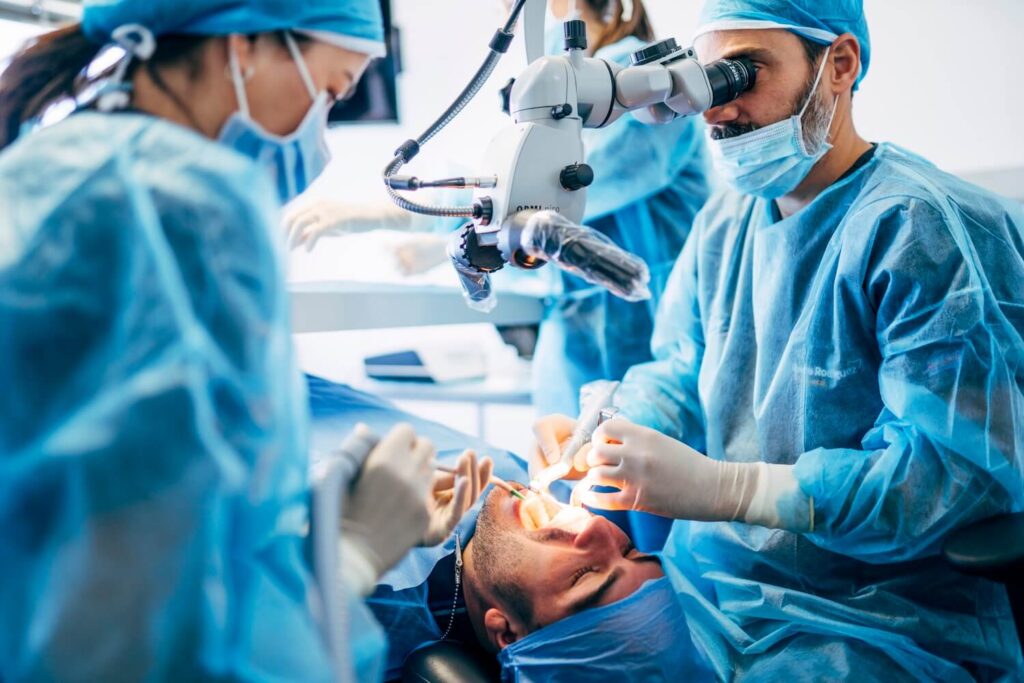Tooth extractions are essential procedures in dentistry, yet they often come with an unfortunate reputation for discomfort and pain. The fear of pain has led many to delay necessary dental care, but recent advancements have revolutionized the field, introducing a new frontier of painless tooth extractions. With cutting-edge technology, improved anesthetics, and a range of modern techniques, extractions can now be virtually pain-free, easing the process for patients of all ages and making dental care more accessible.
In this guide, we’ll explore the evolution of tooth extractions, the breakthrough technologies that make pain-free procedures possible, the variety of options available to manage anxiety and discomfort, and the post-operative innovations that support a smooth and comfortable recovery.
1. Understanding Why Tooth Extractions Are Needed
Tooth extractions are common in dental care, often necessary when a tooth is beyond repair due to damage, disease, or alignment issues. Here are the primary reasons for extractions:
- Severe Decay or Infection: When tooth decay extends to the inner pulp or nerve, it can lead to an intense infection that antibiotics alone can’t resolve. At this stage, extraction may be required to prevent the spread of infection and alleviate pain.
- Overcrowding: Many orthodontic patients need extractions to make room for proper alignment of teeth. For example, removing a tooth may be necessary to ensure braces have enough space to correct bite and alignment issues.
- Advanced Periodontal Disease: This condition, also known as gum disease, can damage both soft tissues and bone, destabilizing teeth. In advanced cases, extraction may be required to improve overall gum health and avoid further complications.
- Impacted Wisdom Teeth: Wisdom teeth, or third molars, often don’t have enough room to grow in properly, which can lead to pain, infection, and even damage to adjacent teeth. Impacted wisdom teeth are commonly removed, especially when they cause chronic pain or oral health issues.
While the reasons for extractions are numerous, today’s procedures are designed with the patient’s comfort in mind, significantly changing what used to be a dreaded experience into a relatively simple, manageable one.
2. The Evolution from Traditional to Painless Extraction Techniques
The process of extracting teeth has evolved tremendously over the years. Traditional extractions, often involving manual force and basic tools, could cause significant discomfort, trauma, and long recovery times. However, with the advent of new technologies and anesthetics, dentists can now perform extractions with minimal invasiveness and pain.
Advanced Anesthetics
- Today’s anesthetics have become more efficient, reliable, and fast-acting. Local anesthetics can fully numb the area, providing a painless experience while keeping the patient awake and aware.
- Longer-lasting anesthetics reduce the need for repeated applications and ensure that numbness continues well after the procedure, which aids in reducing post-extraction pain.
Minimally Invasive Techniques
- Dentists now use minimally invasive methods like piezosurgery and laser tools to make precise cuts that avoid trauma to surrounding tissues. These techniques not only enhance accuracy but also significantly minimize pain, swelling, and discomfort.
- Minimally invasive approaches result in shorter recovery times and often reduce the need for heavy medications, making it easier for patients to return to their daily activities quickly.
Sedation Dentistry
- Sedation options, ranging from light sedation (like nitrous oxide) to deeper forms like IV sedation, help reduce the emotional distress of dental procedures. Patients with dental anxiety or low pain tolerance benefit immensely from these options, as sedation induces a sense of calm and, in some cases, sleep.
The combination of advanced anesthetics, sedation options, and precise techniques has ushered in a new era of painless extractions, allowing patients to undergo necessary care without the stress or discomfort of traditional methods.
3. Breakthrough Technologies Revolutionizing Tooth Extractions
The new frontier of painless dentistry wouldn’t be possible without significant advancements in dental technology. Here are some of the most notable tools transforming the extraction process:
Laser-Assisted Extractions
- Lasers have revolutionized dental care, allowing for pinpoint accuracy in cutting soft tissues. During extractions, lasers can quickly and effectively remove soft tissue to access the tooth without disturbing surrounding areas, minimizing trauma and bleeding.
- Lasers have natural coagulating properties, which control bleeding and reduce the risk of infection. The ability to operate with such precision means that recovery times are shorter, and the discomfort level is considerably reduced.
Piezosurgery
- Piezosurgery is an advanced method that uses ultrasonic vibrations to cut hard tissues like bone without harming nearby soft tissues. This precise control is essential for extracting teeth close to nerves or sensitive areas, such as impacted wisdom teeth near sinuses.
- With piezosurgery, dentists can perform extractions with a reduced risk of complications, as it allows for the smooth removal of bone and tooth structure with minimal invasiveness.
Digital Imaging and 3D Planning
- Detailed 3D imaging from cone-beam computed tomography (CBCT) scans allows dentists to visualize the tooth and surrounding structures in incredible detail. This helps them identify challenges ahead of time and create a precise, minimally invasive approach.
- 3D planning tools allow dentists to “map” the extraction in advance, ensuring that the procedure is as efficient and gentle as possible. This pre-planning contributes significantly to the painless experience patients now enjoy.
These technological advancements make it easier to control the precision, efficiency, and comfort of extractions, allowing for a personalized approach that considers each patient’s anatomy and needs.
4. Pain Management and Sedation Options for a Comfort-Focused Experience
Proper pain management is essential to achieving a painless tooth extraction. Dentists today have a suite of options that allow them to tailor pain relief to the unique needs of each patient.
Local Anesthesia
- Local anesthetics remain a staple for tooth extractions, numbing the area around the tooth and providing complete pain relief during the procedure. The effects of local anesthesia can last several hours, ensuring comfort not only during but also immediately after the extraction.
Sedation Options
- For patients with heightened anxiety or sensitivity, dentists may recommend conscious sedation options. Nitrous oxide, also known as laughing gas, is a mild sedative that relaxes patients while keeping them awake.
- Oral sedation involves taking a medication prior to the procedure that helps alleviate anxiety and induces a relaxed, calm state.
IV Sedation and General Anesthesia
- IV sedation offers a deeper level of sedation, often used for complex extractions or patients with extreme dental fear. This type of sedation induces a state of deep relaxation, with most patients having no memory of the procedure.
- General anesthesia, which renders the patient completely unconscious, is typically reserved for very complex cases or when the patient requests complete sedation.
Sedation dentistry enables a more customized approach to comfort, ensuring that every patient has a painless, relaxed experience suited to their individual needs.
5. Innovations in Post-Operative Pain Relief and Healing
Modern dentistry goes beyond the extraction itself to prioritize post-operative comfort and healing. Innovations in post-operative care have made a significant difference in managing pain and accelerating recovery.
Anti-Inflammatory Medications
- Anti-inflammatory drugs, like ibuprofen, are commonly recommended to control swelling after extraction. Dentists may prescribe corticosteroids for patients who require additional pain control or are at risk of complications.
Platelet-Rich Fibrin (PRF) Therapy
- PRF is a bioactive clot made from the patient’s own blood, which is placed at the extraction site. Rich in growth factors, PRF accelerates healing, reduces post-operative pain, and minimizes the risk of complications.
- PRF acts as a “natural bandage,” promoting tissue regeneration and supporting faster, more comfortable healing.
Cold Laser Therapy
- Cold laser therapy uses low-intensity lasers to stimulate healing and reduce inflammation post-extraction. This painless therapy minimizes swelling, enhances blood flow, and accelerates tissue repair, making recovery more comfortable and efficient.
These post-operative options, combined with minimally invasive extraction methods, mean that patients now enjoy not only painless procedures but also easier, quicker recoveries with fewer complications.
6. Benefits of Painless Extractions for Dental Health
The advantages of painless extractions extend beyond comfort, offering both physical and psychological benefits:
Reduced Recovery Time
By minimizing trauma to surrounding tissues, painless extractions result in quicker healing, allowing patients to return to normal activities sooner. The reduced trauma also lowers the risk of complications like dry socket.
Lower Anxiety and Dental Fear
With a painless approach, patients are more likely to address dental issues sooner and less likely to avoid necessary procedures due to fear. This helps prevent the progression of oral health problems and supports long-term care.
Better Oral Health Outcomes
When extractions are done painlessly, patients are less likely to delay or avoid them, leading to better health outcomes. Patients can proceed with other restorative or cosmetic dental treatments sooner, further improving oral health.
7. What to Expect from a Modern Tooth Extraction Procedure
If you’re scheduled for a tooth extraction, here’s what to expect from the modern, painless approach:
Consultation and Planning
Before the procedure, your dentist will conduct a consultation and may take X-rays or CBCT scans to plan the extraction. This allows them to evaluate any complexities and determine the best pain management approach.
Comfort-Focused Procedure
During the extraction, your dentist will apply local anesthesia and any sedation as necessary. Using the latest technology, they’ll remove the tooth with minimal trauma, providing a comfortable and stress-free experience.
Post-Extraction Care and Follow-Up
Your dentist will provide detailed aftercare instructions, often including medications for pain relief, recommendations for dietary changes, and guidance on managing any swelling.
Conclusion
The new frontier of painless tooth extractions has changed the way patients experience dental care.
With advancements in technology, precise techniques, and effective pain management options, extractions have become safe, comfortable, and stress-free. If you’ve been avoiding dental care due to fear of pain, consider consulting with a dentist who specializes in painless procedures and modern extraction methods. Today, getting a tooth extracted is more comfortable than ever, opening doors to a healthier, pain-free smile.


